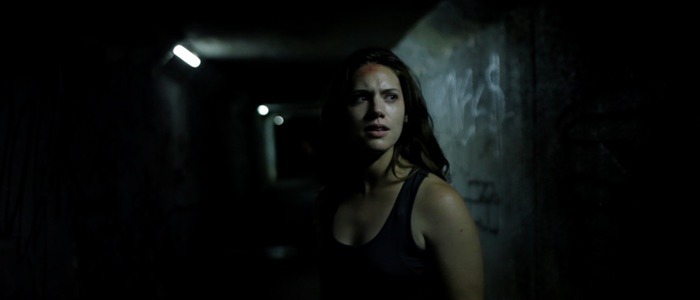A Modern Horror Master: The Career Of 'Gerald's Game' Director Mike Flanagan
How do you adapt an unadaptable Stephen King novel into a movie? The answer, apparently, is to hire Mike Flanagan.Flanagan may not be the type of household name horror director the way John Carpenter, Wes Craven and George Romero once and still are, but over the last several years, he's been quietly rising to prominence as one of the most efficient craftsmen in the horror genre. As a horror filmmaker, Flanagan seems to have a knack for taking unlikely, or unworkable, concepts and finding the humanity in them. Gerald's Game, Flanagan's adaptation of a seemingly unfilmable King novel, has already earned high praise from early screenings and hits Netflix today, possibly launching the filmmaker to even greater prominence. The film is exemplary, but it's just another piece in the greater puzzle that is Flanagan's growing filmography.
Absentia (2011)
Flanagan's first feature length foray into horror came with the ultra low-budget chiller Absentia. A moody, foreboding work, it succeeds at making the seemingly mundane seem alien and uninviting; short tunnels on walking paths became gateways to other dimensions, darkened rooms hold the prospect of lurking, unspeakable things.Tricia (Courtney Bell) has yet to fully come to terms with the disappearance of her husband Daniel (Morgan Peter Brown). Seven years ago, Daniel vanished without a trace, and Tricia has seemingly spent every single moment of those last seven years searching for him. She replaces old MISSING posters with new ones. She runs fantasies, some violent, through her mind about what could've happened to Daniel. She grieves, but it's a unsettling, unstructured grief, because it's the not knowing that keeps it from being fully formed. Not knowing is worse than knowing – at this point, it would be better if she had definitive proof that Daniel was dead rather than no trace of him at all.Tricia's sister Callie (Catherine Parker) comes to live with her, and soon Tricia finds herself pressured to declare Daniel dead in absentia. It's a chance to finally move on. But it's as if fate itself won't let Tricia fully move on. Callie finds herself drawn to a tunnel near the house, and some digging reveals that the tunnel may be responsible for other disappearances. And that something may be lurking, just out of view.Absentia is a quiet film. It slowly builds towards bigger and more supernatural horrors, but the horror at the center of it all is a very human one. Grief, and loss, and uncertainty are what truly pepper the mood. It's a prime example of "less is more." It takes some time before Flanagan even gives the audience a hint that something supernatural is afoot here, yet through the entire film, the feeling is there. The feeling that something is very wrong here, as if the very center of the universe has curdled and is beginning to spoil."The 'less is more' aesthetic is certainly something that was intentional," Flanagan said of the film. "I really believe it makes for a more frightening experience if the viewer is an imaginative person. Of course budget played a big part in that, but people have asked if we'd do it different if we'd had more money, and I really feel like we wouldn't have. Not much, anyway. Maybe we would have shown just a little more, but keeping the horror mostly unseen was a major philosophical decision early on, and truly ingrained in the DNA of this story."Flanagan was using what he had at hand to make the film. The ominous tunnel that plays such a large part in the film was just simply a tunnel across the street from his house. The cast and crew were friends. All that was missing was a story. "[I]t was all about looking at the ingredients I had at hand," the filmmaker said. "How could I combine these actors, that tunnel, and a barebones production package (no lights, no dollies, no nothing) into a story that would maximize all of those elements? The script and story were the last things to fall into place...The moment I had a mental image of a Missing Person's poster in front of that tunnel, the rest fell into place fast. It was easy to write, on one hand, because I knew I couldn't put anything into the script that I didn't have immediate access to."The "less is more" approach works greatly in Absentia's favor. Because the film, and by extension the characters, primarily deals with every-day concerns, not supernatural ones, the film becomes more unnerving, more frightening. We can easily put ourselves into the headspace of the characters here, which makes the sudden shift into the supernatural all the more disturbing. We're so invested into these individuals as real people inhabiting a real world that to find them suddenly dealing with unearthly elements makes everything so much more scary.Even as Flanagan's career continued onto bigger films with bigger, and even more outlandish, scenarios, his commitment to keeping things grounded is what helped make the films truly effective.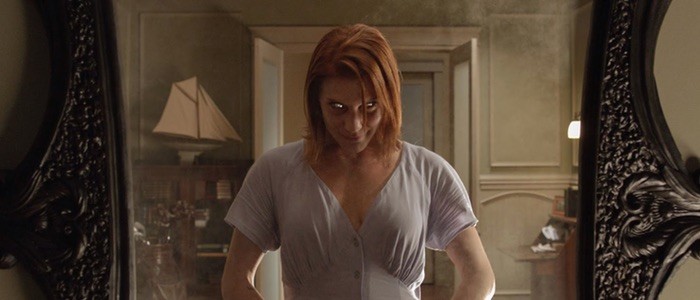
Oculus (2013)
Stop me if you heard this one before: there's a mirror, and it's haunted.Okay, in all honesty, that's not the most common of ghost stories. Stephen King wrote a short story in 1969 called The Reaper's Image, about an antique mirror that some people claim to have seen the grim reaper in if they look close enough, but beyond that, haunted mirror stories don't get much traffic. Probably because the concept sounds rather silly.Yet Flanagan found a way to make it work, and effectively so. Oculus originally began its life a short film before the filmmaker developed it as a feature for Blumhouse. The feature finds siblings Kaylie (Karen Gillan) and Tim (Brenton Thwaites) reuniting after years and returning to their old family home. Waiting for them at the house is an large, ominous antique mirror that played a part in a traumatic event in the siblings past. An event that took the lives of their parents (Katee Sackhoff and Rory Cochrane). Kaylie firmly believes there's something supernatural about the mirror; that it opened a portal of some kind and slowly destroyed their family.Flanagan plays around with timelines here, cutting back between present day and the events that occurred when the siblings were children. Through it all, Oculus never winks at the audience. It never stops and says, "Isn't this silly? A haunted mirror?" Instead, it plays its supernatural elements straight. But like Absentia, it again takes its time. It's not outwardly concerned with jumping into the supernatural."One of the things that was really important to me was looking at movies like The Exorcist which give you like 47 minutes before anything really overtly supernatural occurs," Flanagan said around the time of the film's release. "It was like, OK, the thing that is going to make the genre elements and the tension really land for that second half is only if we feel normal with that. And a lot of horror movies don't want to go that way, because they assume the audience doesn't have the patience for it."There are plenty of supernatural moments in Oculus, some of them quite extreme. Yet at the center of all is the family dynamic, and the theme of a broken, abusive home. You could just as easily remove the ghosts that haunt this film and it wouldn't be any less horrific. Slowly, in flashbacks, we watch as Kaylie and Tim's father loses his grip on sanity. There are shades of The Shining here, and Jack Torrence's descent into madness. And just like Absentia, grief plays a part in the horror. Both Kaylie and Tim have been dramatically affected in different ways by the deaths of their parents, and in many ways, neither has ever taken the time to grieve. Obsession, and the mental blocking out of certain events, have colored their lives since the traumatic past."I'm a natural born skeptic," the filmmaker said, "and for myself I think the ghosts and monsters in our lives come directly from our past or from our losses and that we all relate to this feeling of being haunted because in a lot of ways we all are. I think horror gives us a chance to explore that in a highly metaphorical way so I tend to tell stories where the supernatural or horror elements come from past trauma or things that are buried in the character."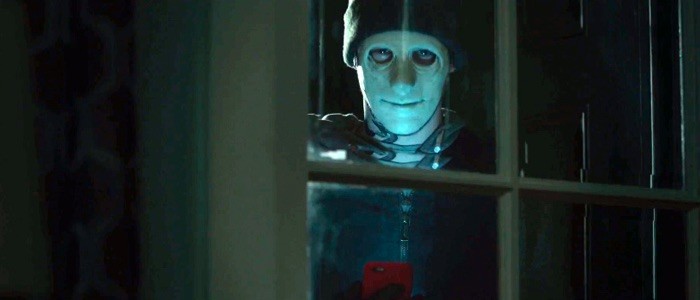
Hush (2016)
Flanagan left the supernatural behind completely for his next film, the Netflix-released Hush. Co-written with his wife Kate Siegel, who stars, Hush takes the framework of your standard home invasion story and turns it on its head. Siegel plays Maddie, a deaf writer living in seclusion, working to finish her latest mystery novel.Her evening is violently interrupted when a masked killer suddenly arrives. The horror that unfolds deals with the fact that since Maddie cannot hear, she can never been 100% sure just where the killer is. In one of the film's most tense sequences, the killer is literally inches behind Maddie, and she has no idea. Flanagan lets the scene linger, the tension building, as we wait for what will happen next.While Hush was the first Flanagan film to eschew the supernatural, he approached it the same way he had approached his previous films. "For me, whether it's something supernatural or not, it's never been important," the director said. "The things that draw me to something are the characters and the tension. I think it was hopefully inevitable that I get out of the supernatural side of things, which is a great way to get started...For me, it's always been about, 'Am I connected to the characters?'"As played by Siegel, Maddie is a character easy to root for. A lesser filmmaker may have gone to greater lengths to exploit Maddie's deafness, but Flanagan never does. Maddie is incredibly strong, and in some sequences is able to use her deafness against her would-be attacker – an ear-shattering alarm sound can debilitate him, while not affecting her at all, for instance.One key moment that helps the film stay grounded occurs early on. After the masked man makes his presence known, Flanagan has him remove his mask to reveal...a pretty ordinary looking guy (played by John Gallagher Jr.). This isn't like the The Strangers, where the home invaders remain masked the entire time and by extension become almost otherworldly. Here, the killer is just a random guy. Some may find fault in him removing his mask so early in the proceedings, but it's actually a stroke of genius.Once again, Flanagan is making the horror realistic. A man keeping a Halloween mask on for an entire film is the stuff of Friday the 13th or Halloween sequels; films that don't have much use for reality. Here, the killer becomes even more plausible by removing his mask. It brings him down to a more human level, which is much more terrifying because it's much more likely. We can believe a guy like this exists, and that he's out there somewhere. In fact, he could be anyone. Anyone at all that we stumble across in our everyday lives. Watching. And waiting.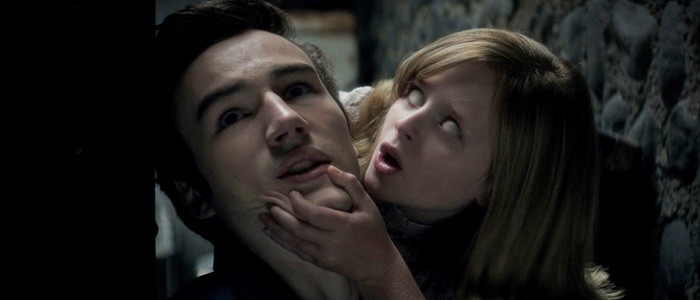
Ouija: Origin of Evil (2016)
No one wanted a sequel to Ouija. The 2014 teen-aimed horror film was dreadful, and not in the ways horror filmmakers want. Void of scares and brains, it nonetheless turned enough of a profit for Blumhouse to commission a sequel. But rather than take the easy way out release more dreck, Blumhouse head honcho Jason Blum actually turned to Flanagan and gave him free reign to do something different. Something better."I have an allergy to sequels and remakes in general," said Flanagan. "With this one, when I was first talking to [Jason] Blum, he told me they were really happy with the financial performance of the first movie, but no one involved had illusions about the critical response. So he said, 'If we're going to get another bite at this apple because the movie performed so well, we really want to differentiate it, we really want it to be something that's it's own thing.' The connections to the first movie weren't as important to them as making a good movie. If we hadn't had that conversation right off the bat, I wouldn't have pursued it at all."Flanagan moved the film, Ouija: Origin of Evil, to a period setting – 1967 Los Angeles. It gives the film an out-of-time look that instantly sets it apart from the first film. It's as if from the first frame, Flanagan is signaling to the audience that this will not be Ouija. This will be something completely different.Once again, the filmmaker works in grounded conventions. At the center of Origin of Evil is a single mother Alice (Elizabeth Reaser) and her three children, all struggling to get by. Alice works as a medium, telling fortunes and contacting the dead, but it's all a sham; an elaborate con game that she uses her children in to help pull off believable messages from the "spirit world." Alice tries to justify this scamming by telling herself, and her children, that what she's doing is helping people, but deep down the spectre of illegitimacy haunts them all.They won't have to fake contact with the other side for long, because a dalliance with an Ouija board leads to genuine supernatural events. For a PG-13, teen-targeted horror film, Ouija: Origin of Evil goes to some extreme places. It's not overly concerned with frivolous jump scares, but instead builds dread and unease as it draws to a terrifying, surprisingly bleak finale. Just as with his previous films, Flanagan bides his time. He slowly teases out the supernatural before going full-blown into it. And once more, it makes the supernatural reveal all the more frightening.Yet no matter how supernatural things get, the theme of family – and the threat to that family – is what drives the horror. "I grew up in a very healthy nuclear family, and I was fortunate enough to not have to deal with loss and grief as a child," the director would say. "I associate a family as the safest place in the world. So when it comes to things that scare me, introducing instability and tension into where you're supposed to be the safest really strikes a chord with me. What's so exciting and unstoppable about the horror genre is that I view it all as metaphorical exploration. It's the safe place that we, as a culture, can deal with things that upset and frighten us—the darker side of our nature."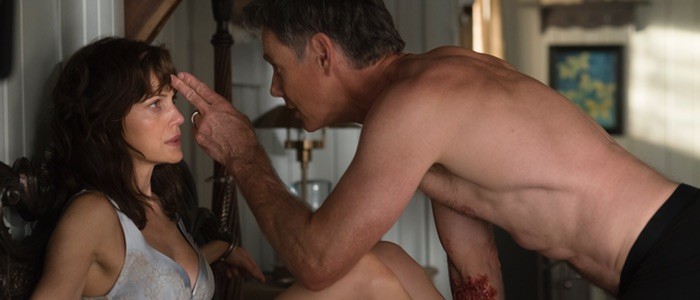
Gerald’s Game (2017)
Stephen King's 1992 novel Gerald's Game was one of the only noteworthy books from the prolific horror author to not make a quick leap from page to screen. In a market that's long been oversaturated with King adaptations, there's a good reason no one has tried to touch it before: it's practically unadaptable. Well, seemingly unadaptable.King's book takes place almost entirely in one room, where an evening of kinky sex turns into a nightmare. Jessie Burlingame has been handcuffed to the bed in a secluded getaway house by her husband Gerald, who has suddenly keeled over from a heart attack. With no one around for miles, and no way to get out of the cuffs, Jessie finds her mind reeling. Her accidental imprisonment would be bad enough, but add a ravenous stray dog into the mix and a potential serial killer, and things go from bad to worse pretty quickly.King's novel is very internal – it gets inside Jessie's head while she struggles to free herself and recalls her past. Internal monologuing is great for the printed page, but it's not exactly cinematic. Flanagan's solution seems rather ingenious – he has Jessie, played marvelously by Carla Gugino, talk to herself, quite literally. Mental representations of herself and her dead husband (Bruce Greenwood) both torment and attempt to help Jessie as she struggles with the cuffs.Even here, Flanagan is able to work within his familiar fractured family themes, as Jesse recalls a traumatic event from her childhood involving her father (Henry Thomas). The scenes from Jesse's childhood are more horrifying than anything that happens in her prison bedroom – even more so than a graphic, cringe-inducing moment that will have viewers crying out in shock. This is due to the matter-of-fact way Flanagan handles the traumatic childhood moments, and the cool, calculated way Jessie's father manipulates her. It's ten times more horrific than any supernatural horror.Gerald's Game isn't your standard horror thriller. There aren't jump scares, there aren't supernatural tones. Yet it's undeniably scary, and that's all because of how Flanagan treats his main character. By getting us inside Jessie's head, we very quickly become sympathetic to her. And as a result, we struggle right along with her."What you don't see is always scarier than what you do," Flanagan says of the film. "There's nothing scarier than silence. A lot of horror movies lean on hits and score to try and create tension, which actually does the opposite. The best scares come from a desire to see the character overcome what they're dealing with in the scene. If you care about the character you'll care about the scare."It's as if Flanagan's entire directorial career has been building towards this film. Here, the director is showing what he's learned through his previous films and employing it all at once to amazing effect. He has adapted the unadaptable, and there should have never been any doubt that he could. Next up, the filmmaker has an adaptation of Shirley Jackson's The Haunting in the works, and that's a perfect collision of creator and material. The horror in Jackson's book doesn't so much come from the supernatural forces possibly at work in the haunted house where the story is set, but rather from the internal workings of its main character, and from the family trauma from her past.
Since 2011, Mike Flanagan has been finding ways to terrify audiences by showing them that less is more. The thing you can't see is always more frightening than the thing you can. Because our own mind is what's driving that fear; what's making the impossible seem possible. Flanagan is one of the best horror filmmakers working today because he understands that, and knows exactly how to use it. Other horror directors should start taking notes.

